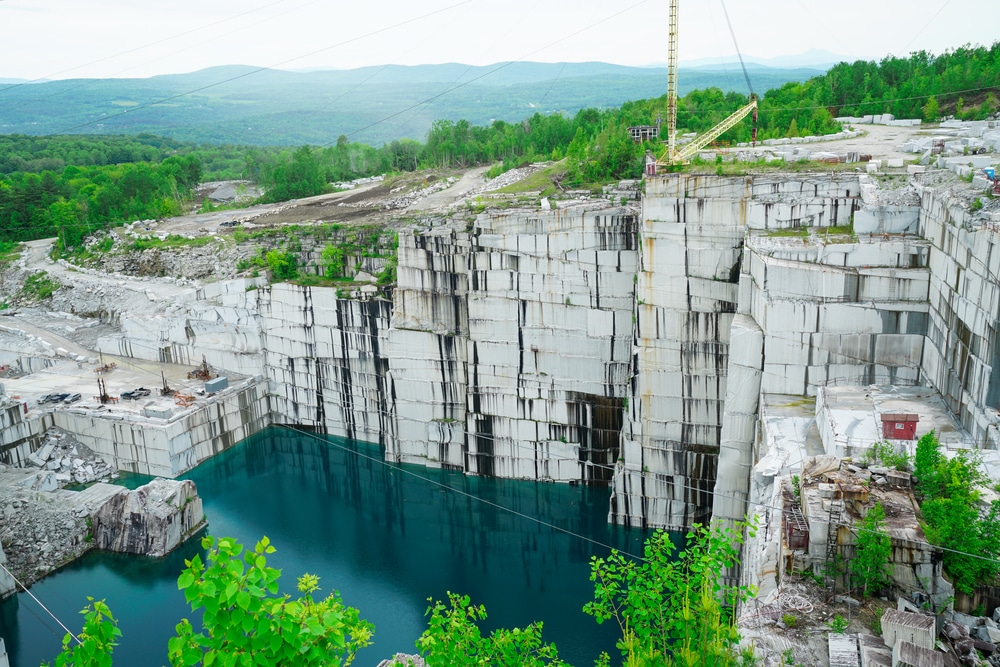Uncovering the Rich History and Sustainable Practices of Granite Quarrying
As we base on the precipice of discovering the complex tapestry of granite quarrying, a trip via time reveals not simply the physical act of drawing out stone but likewise the social and historical relevance woven right into the extremely fabric of this technique. From the ancient origins that laid the foundation for modern quarrying techniques to the sustainable methods that are forming the future of this industry, each carve mark on granite surface areas tells a story waiting to be discovered (granite quarries in south africa). The tradition of granite quarrying extends much beyond plain removal; it is a testimony to human ingenuity, strength, and the enduring appeal of this impressive stone
Old Beginnings of Granite Quarrying
Going back to ancient worlds, the practice of quarrying granite has actually been an essential part of human background and building innovation. The earliest proof of granite quarrying go back to ancient Egypt, where huge pyramids and intricate sculptures were crafted from this long lasting stone. The Egyptians used primitive devices to draw out granite blocks from quarries, showcasing the significance of this material in their significant buildings.
Moving on in history, the Greeks likewise made significant payments to the quarrying of granite. The Greeks used granite in different building marvels, such as holy places and statuaries, showing their ability in shaping and carving this hardy stone. The Romans further fine-tuned the techniques of quarrying granite, using innovative devices like chisels and hammers to remove and form granite for their renowned structures.
Through the centuries, the practice of quarrying granite has actually evolved, with modern-day technologies improving efficiency while keeping the ageless allure of this natural rock - granite quarries in south africa. From ancient civilizations to modern contractors, the legacy of granite quarrying continues to form our world
Advancement of Quarrying Strategies
The development of quarrying techniques has actually been marked by a continual development towards greater performance and accuracy in removing granite. From the simple approaches utilized by our forefathers to the sophisticated technologies used in modern quarrying operations, the industry has undertaken significant improvements. Early quarrying methods involved manual work with fundamental tools such as chisels, hammers, and wedges to draw out granite blocks from the earth. As worlds advanced, techniques like fire-setting and primitive dynamites were presented to promote the extraction process.
In even more recent times, the introduction of machinery changed the quarrying sector, allowing faster removal prices and boosted productivity. Technologies such as diamond wire saws, high-pressure water jets, and pneumatic drills have actually ended up being standard in contemporary quarries, permitting specific cutting and minimized waste. In addition, advancements in computer-controlled tools and 3D modeling have optimized quarrying operations, bring about minimal ecological impact and enhanced sustainability techniques. As the demand for granite remains to increase, the evolution of quarrying strategies continues to be indispensable to meeting sector needs efficiently and sustainably.
Cultural Relevance of Granite
Granite holds an extensive cultural value throughout different civilizations because of its enduring existence in architectural work of arts and respected monuments. From the impressive pyramids of Egypt to the elaborate makings of the Angkor Wat temple in Cambodia, granite has been a material of choice for expressing magnificence and durability in social heritage. In old Rome, granite columns embellished holy places and public buildings, symbolizing stamina and permanence. The cultural significance of granite extends past its physical features; it symbolizes resilience, stability, and timelessness, making it a symbol of sustaining heritages and traditions.

Sustainable Practices in Quarrying
In the middle of the rich background of granite quarrying and its social value lies an expanding focus on sustainable methods within the market. As ecological recognition and concerns about resource depletion have heightened internationally, the quarrying sector has significantly accepted lasting approaches to reduce its influence on the setting and surrounding areas.

In addition, recovery and rehab of quarry sites post-extraction are essential to sustainable practices. By restoring quarried areas to a natural or helpful state, such as creating wild animals environments or entertainment areas, quarriers can counter the environmental impact of their operations and add favorably to the regional ecosystem.
Heritage of Granite Quarrying
With a historical background steeped in workmanship and commercial progression, what sustaining impact has granite quarrying left on the landscape of modern culture? The tradition of granite quarrying transcends mere extraction practices; it has shaped building wonders, urban landscapes, and social heritage worldwide. The long lasting nature of granite has made it a preferred selection for monoliths, buildings, and facilities, standing as a testimony to the skill and artistry of quarry workers throughout generations.
Moreover, the financial footprint of granite quarrying can not be forgotten. The market continues to provide job opportunity and drive local economic climates in areas where granite removal is common. It has also stimulated technical innovations in quarrying techniques and devices, resulting in a lot more efficient and lasting techniques.
In terms of sustainability, the heritage of granite quarrying includes initiatives to alleviate ecological impacts with recovery tasks and accountable resource management. By balancing economic rate of interests with ecological stewardship, the market aims to make sure that future generations can these details remain to profit from this long-lasting natural deposit.
Conclusion

Comments on “Journeying Via Granite Quarries in South Africa: A Visual Odyssey”